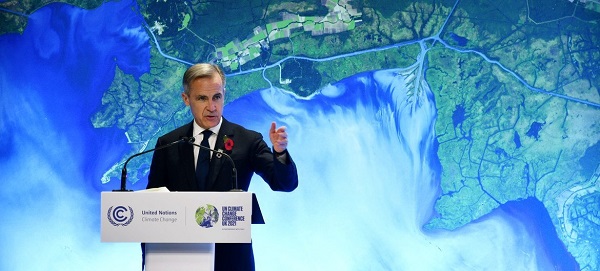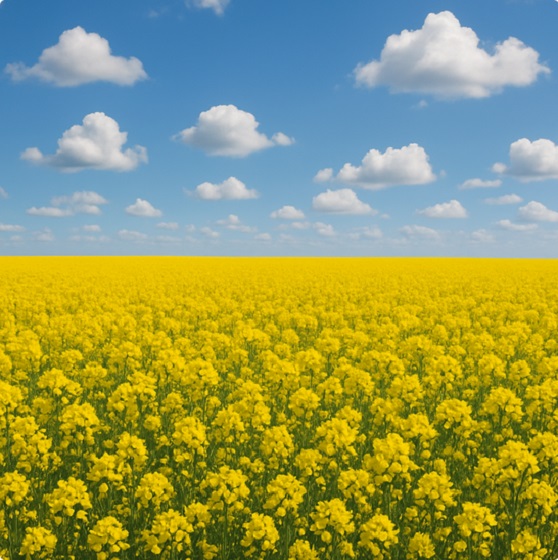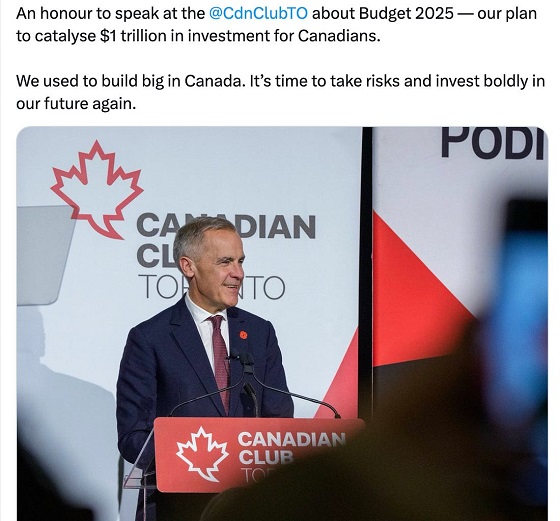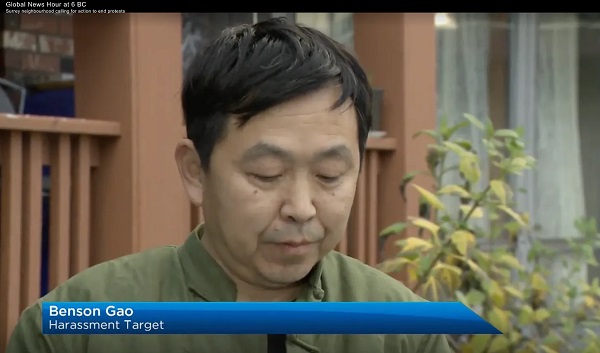Alberta
Alberta relaunch moves into Stage Two on Friday
From the Province of Alberta
Alberta moves to stage two of relaunch
Strong testing data shows active COVID-19 cases in Alberta are lower than expected, meaning stage two of the relaunch strategy can safely begin on June 12, a week sooner than expected.
Albertans can enjoy additional activities in their daily lives while the province continues to open up the economy.
“Albertans have demonstrated the care and common sense needed to move forward with our relaunch earlier than initially planned. Our data tells us our active cases are low, hospitalizations are trending downward and people are taking action to protect those most vulnerable and prevent the spread of the virus. We will continue to move forward together to overcome any tough times ahead, but responsible Albertans should be proud of the vigilance they have shown to date.”
Current data from June 8 show only 355 active cases and 44 people in hospital across Alberta. This is a decrease of almost 70 per cent in active cases since May 14 – when the province began stage one of the Alberta Relaunch Strategy. With its robust approach to testing, Alberta has performed more COVID-19 tests per capita than most other jurisdictions in the world.
As the province enters stage two of relaunch, safety remains the top priority. More businesses, sport and recreation services can open if they are ready. Some larger gatherings for seated audience events will be permitted. In all cases, public health guidance must be followed.
A new interactive map will help Albertans understand the level of risk in their community and learn about any enhanced health measures at the local level, giving additional information on what they need to do to keep themselves and their loved ones safe and protected. Currently, no communities in Alberta need locally targeted enhanced measures.
“More Albertans can now return to work and to the activities so many of us enjoy. However, I encourage you to do it safely. Think of the people in your life who may be at high risk from COVID-19 and protect all those around you as you would want your loved ones protected. Stay home if you are sick. Stay two metres apart and wear a non-medical mask if you can’t. Consider downloading the ABTraceTogether app, and wash your hands often.”
What can open with restrictions
- K-12 schools, for requested diploma exams and summer school, following guidance
- Libraries
- More surgeries
- Wellness services such as massage, acupuncture and reflexology
- Personal services (esthetics, cosmetic skin and body treatments, manicures, pedicures, waxing, facial treatment, artificial tanning)
- Indoor recreation, fitness, and sports, including gyms and arenas
- Movie theatres and theatres
- Community halls
- Team sports
- Pools for leisure swimming
- VLTs in restaurants and bars
- Casinos and bingo halls (but not table games)
- Instrumental concerts
The 50 per cent capacity limit for provincial campgrounds is also being lifted. Over the coming days, the online reservation system will be updated and sites will come online in phases. By July 1, all camping sites will be open for reservations. First-come, first-served sites may open sooner. Information on additional sites will be added to alberta.parks.ca when they become available.
Events and gatherings can be larger in stage two
Maximum 50 people:
- Indoor social gatherings – including wedding and funeral receptions, and birthday parties
Maximum 100 people:
- Outdoor events and indoor seated/audience events – including wedding and funeral ceremonies
No cap on the number of people (with public health measures and physical distancing in place):
- Worship gatherings
- Restaurants, cafés, lounges and bars
- Casinos
- Bingo halls
There is more flexibility for ‘cohort’ groups – small groups of people whose members do not always keep two metres apart:
- A household can increase its close interactions with other households to a maximum of 15 people
- Performers can have a cohort of up to 50 people (cast members or performers)
- Sports teams can play in region-only cohorts of up to 50 players (mini leagues)
- People could be part of a sports/performing and household cohort
Everyone is encouraged to follow public health guidelines and notify others in the cohort(s) if they have symptoms or test positive for COVID-19. If they do test positive or have symptoms, mandatory isolation is required.
Still not approved in stage two
- Social gatherings that exceed above listed maximums
- Regular in-school classes for kindergarten to Grade 12. Classes will resume September 2020
- Vocal concerts (as singing carries a higher risk of transmission)
- Major festivals and concerts, large conferences, trade shows and events (as these are non-seated social events and/or vocal concerts)
- Nightclubs
- Amusement parks
- Hookah lounges (permitted for food and drink only)
- Major sporting events and tournaments
- Non-essential travel outside the province is not recommended. This recommendation will not be lifted until stage three of the relaunch strategy.
The success of stage two will determine when Alberta progresses to stage three. Factors are active cases, health-care system capacity, hospitalization and intensive care unit (ICU) cases, and infection rates. For more information, visit alberta.ca/RelaunchStrategy.
Quick facts
- Relaunch stages include an evaluation and monitoring period to determine if restrictions should be adjusted. Triggers that will inform decisions include active cases, hospitalizations and intensive care unit (ICU) occupancy.
- Active cases, the percentage of positive results and the rate of infection will be monitored to inform proactive responses in localized areas of the province.
- Decisions will be applied at both provincial and local levels, where necessary. While restrictions are gradually eased across the province, an outbreak may mean that they need to be strengthened temporarily in a local area.
- Physical distancing and good hygiene are the most important measures to prevent respiratory illnesses, including COVID-19.
- Clean your hands regularly for at least 20 seconds, avoid touching your face, cough or sneeze into your elbow or sleeve, and dispose of tissues appropriately.
Alberta
Federal budget: It’s not easy being green

From Resource Works
Canada’s climate rethink signals shift from green idealism to pragmatic prosperity.
Bill Gates raised some eyebrows last week – and probably the blood pressure of climate activists – when he published a memo calling for a “strategic pivot” on climate change.
In his memo, the Microsoft founder, whose philanthropy and impact investments have focused heavily on fighting climate change, argues that, while global warming is still a long-term threat to humanity, it’s not the only one.
There are other, more urgent challenges, like poverty and disease, that also need attention, he argues, and that the solution to climate change is technology and innovation, not unaffordable and unachievable near-term net zero policies.
“Unfortunately, the doomsday outlook is causing much of the climate community to focus too much on near-term emissions goals, and it’s diverting resources from the most effective things we should be doing to improve life in a warming world,” he writes.
Gates’ memo is timely, given that world leaders are currently gathered in Brazil for the COP30 climate summit. Canada may not be the only country reconsidering things like energy policy and near-term net zero targets, if only because they are unrealistic and unaffordable.
It could give some cover for Canadian COP30 delegates, who will be at Brazil summit at a time when Prime Minister Mark Carney is renegotiating his predecessor’s platinum climate action plan for a silver one – a plan that contains fewer carbon taxes and more fossil fuels.
It is telling that Carney is not at COP30 this week, but rather holding a summit with Alberta Premier Danielle Smith.
The federal budget handed down last week contains kernels of the Carney government’s new Climate Competitiveness Strategy. It places greater emphasis on industrial strategy, investment, energy and resource development, including critical minerals mining and LNG.
Despite his Davos credentials, Carney is clearly alive to the fact it’s a different ballgame now. Canada cannot afford a hyper-focus on net zero and the green economy. It’s going to need some high octane fuel – oil, natural gas and mining – to prime Canada’s stuttering economic engine.
The prosperity promised from the green economy has not quite lived up to its billing, as a recent Fraser Institute study reveals.
Spending and tax incentives totaling $150 billion over a decade by Ottawa, B.C, Ontario, Alberta and Quebec created a meagre 68,000 jobs, the report found.
“It’s simply not big enough to make a huge difference to the overall performance of the economy,” said Jock Finlayson, chief economist for the Independent Contractors and Business Association and co-author of the report.
“If they want to turn around what I would describe as a moribund Canadian economy…they’re not going to be successful if they focus on these clean, green industries because they’re just not big enough.”
There are tentative moves in the federal budget and Climate Competitiveness Strategy to recalibrate Canada’s climate action policies, though the strategy is still very much in draft form.
Carney’s budget acknowledges that the world has changed, thanks to deglobalization and trade strife with the U.S.
“Industrial policy, once seen as secondary to market forces, is returning to the forefront,” the budget states.
Last week’s budget signals a shift from regulations towards more investment-based measures.
These measures aim to “catalyse” $500 billion in investment over five years through “strengthened industrial carbon pricing, a streamlined regulatory environment and aggressive tax incentives.”
There is, as-yet, no commitment to improve the investment landscape for Alberta’s oil industry with the three reforms that Alberta has called for: scrapping Bill C-69, a looming oil and gas emissions cap and a West Coast oil tanker moratorium, which is needed if Alberta is to get a new oil pipeline to the West Coast.
“I do think, if the Carney government is serious about Canada’s role, potentially, as an global energy superpower, and trying to increase our exports of all types of energy to offshore markets, they’re going to have to revisit those three policy files,” Finlayson said.
Heather Exner-Pirot, director of energy, natural resources and environment at the Macdonald-Laurier Institute, said she thinks the emissions cap at least will be scrapped.
“The markets don’t lie,” she said, pointing to a post-budget boost to major Canadian energy stocks. “The energy index got a boost. The markets liked it. I don’t think the markets think there is going to be an emissions cap.”
Some key measures in the budget for unlocking investments in energy, mining and decarbonization include:
- incentives to leverage $1 trillion in investment over the next five years in nuclear and wind power, energy storage and grid infrastructure;
- an expansion of critical minerals eligible for a 30% clean technology manufacturing investment tax credit;
- $2 billion over five years to accelerate critical mineral production;
- tax credits for turquoise hydrogen (i.e. hydrogen made from natural gas through methane pyrolysis); and
- an extension of an investment tax credit for carbon capture utilization and storage through to 2035.
As for carbon taxes, the budget promises “strengthened industrial carbon pricing.”
This might suggest the government’s plan is to simply simply shift the burden for carbon pricing from the consumer entirely onto industry. If that’s the case, it could put Canadian resource industries at a disadvantage.
“How do we keep pushing up the carbon price — which means the price of energy — for these industries at a time when the United States has no carbon pricing at all?” Finlayson wonders.
Overall, Carney does seem to be moving in the right direction in terms of realigning Canada’s energy and climate policies.
“I think this version of a Liberal government is going to be more focused on investment and competitiveness and less focused around the virtue-signaling on climate change, even though Carney personally has a reputation as somebody who cares a lot about climate change,” Finlayson said.
“It’s an awkward dance for them. I think they are trying to set out a different direction relative to the Trudeau years, but they’re still trying to hold on to the Trudeau climate narrative.”
Pictured is Mark Carney at COP26 as UN Special Envoy on Climate Action and Finance. He is not at COP30 this week. UNRIC/Miranda Alexander-Webber
Resource Works News
Alberta
ChatGPT may explain why gap between report card grades and standardized test scores is getting bigger

From the Fraser Institute
By Paige MacPherson and Max Shang
In Alberta, the gap between report card grades and test/exam scores increased sharply in 2022—the same year ChatGPT came out.
Report card grades and standardized test scores should rise and fall together, since they measure the same group of students on the same subjects. But in Alberta high schools, report card grades are rising while scores on Provincial Achievement Tests (PAT) and diploma exams are not.
Which raises the obvious question—why?
Report card grades partly reflect student performance in take-home assignments. Standardized tests and diploma exams, however, quiz students on their knowledge and skills in a supervised environment. In Alberta, the gap between report card grades and test/exam scores increased sharply in 2022—the same year ChatGPT came out. And polling shows Canadian students now rely heavily on ChatGPT (and other AI platforms).
Here’s what the data show.
In Alberta, between 2016 and 2019 (the latest year of available comparable data), the average standardized test score covering math, science, social study, biology, chemistry, physics, English and French language arts was just 64, while the report card grade 73.3—or 14.5 per cent higher. Data for 2020 and 2021 are unavailable due to COVID-19 school closures, but between 2022 and 2024, the gap widened to 20 per cent. This trend holds regardless of school type, course or whether the student was male or female. Across the board, since 2022, students in Alberta high schools are performing significantly better in report card grades than on standardized tests.
Which takes us back to AI. According to a recent KPMG poll, 73 per cent of students in Canada (high school, vocational school, college and university) said they use generative AI in their schoolwork, an increase from the previous year. And 71 per cent say their grades improved after using generative AI.
If AI is simply used to aid student research, that’s one thing. But more than two-thirds (66 per cent) of those using generative AI said that although their grades increased, they don’t think they’re learning or retaining as much knowledge. Another 48 per cent say their “critical thinking” skills have deteriorated since they started using AI.
Acquiring knowledge is the foundation of higher-order thinking and critical analysis. We’re doing students a deep disservice if we don’t ensure they expand their knowledge while in school. And if teachers award grades, which are essentially inflated by AI usage at home, they set students up for failure. It’s the academic equivalent of a ski coach looking at a beginner and saying, “You’re ready for the black diamond run.” That coach would be fired. Awarding AI-inflated grades is not fair to students who will later struggle in college, the workplace or life beyond school.
Finally, the increasing popularity of AI underscores the importance of standardized testing and diploma exams. And parents knew this even before the AI wave. A 2022 Leger poll found 95 per cent of Canadian parents with kids in K-12 schools believe it’s important to know their child’s academic performance in the core subjects by a fair and objective measure. Further, 84 per cent of parents support standardized testing, specifically, to understand how their children are doing in reading, writing and mathematics. Alberta is one of the only provinces to administer standardized testing and diploma exams every year.
Clearly, parents should oppose any attempt to reduce accountability and objective testing in Alberta schools.
-

 Alberta1 day ago
Alberta1 day agoSchool defunding petition in Alberta is a warning to parents
-

 Agriculture1 day ago
Agriculture1 day agoBovaer Backlash Update: Danish Farmers Get Green Light to Opt Out as UK Arla Trial Abruptly Ends!
-

 International1 day ago
International1 day agoBBC boss quits amid scandal over edited Trump footage
-

 Daily Caller1 day ago
Daily Caller1 day agoMcKinsey outlook for 2025 sharply adjusts prior projections, predicting fossil fuels will dominate well after 2050
-

 Agriculture1 day ago
Agriculture1 day agoFarmers Take The Hit While Biofuel Companies Cash In
-

 Business20 hours ago
Business20 hours agoCarney’s Floor-Crossing Campaign. A Media-Staged Bid for Majority Rule That Erodes Democracy While Beijing Hovers
-

 Frontier Centre for Public Policy1 day ago
Frontier Centre for Public Policy1 day agoNotwithstanding Clause Is Democracy’s Last Line Of Defence
-

 Business1 day ago
Business1 day agoCarney government needs stronger ‘fiscal anchors’ and greater accountability









